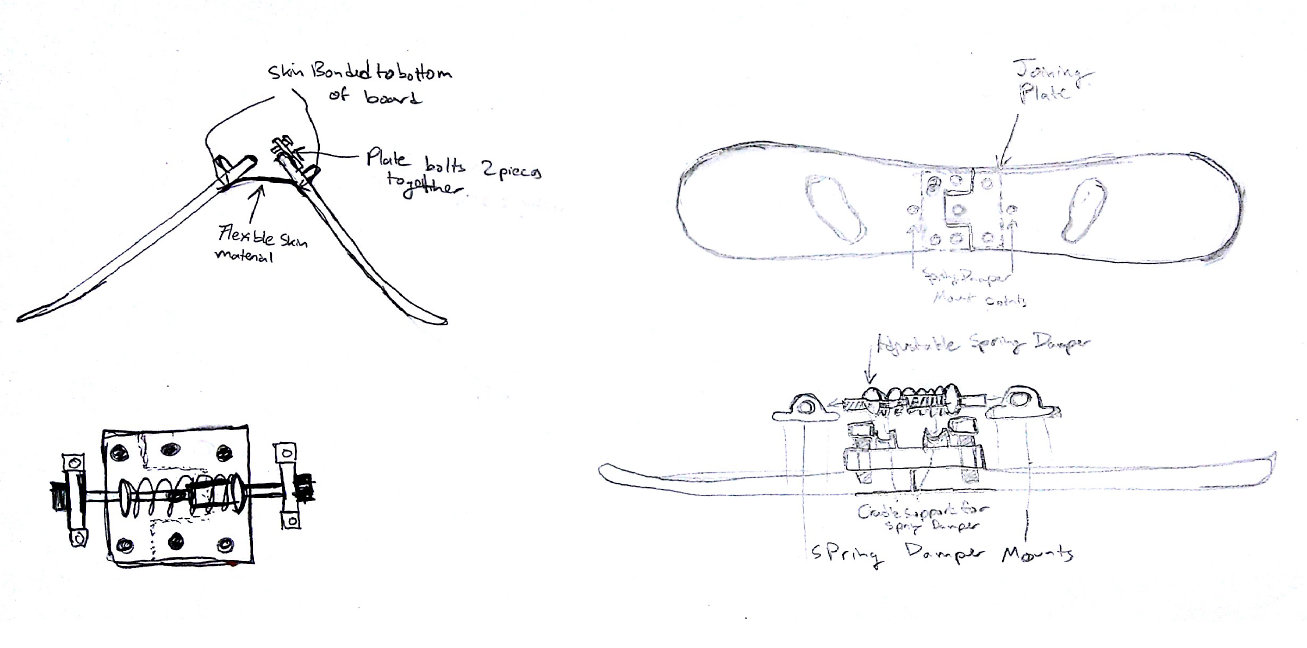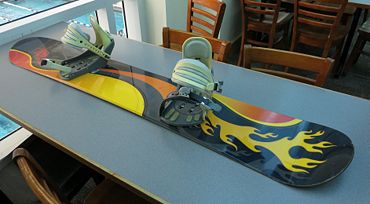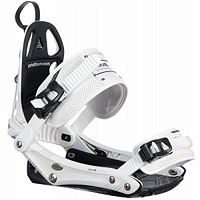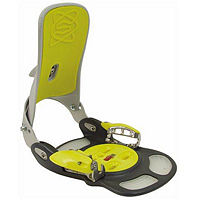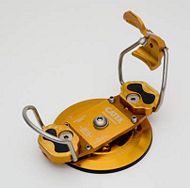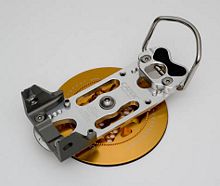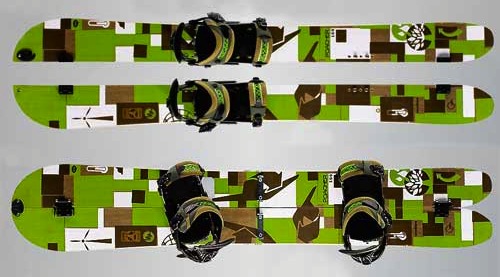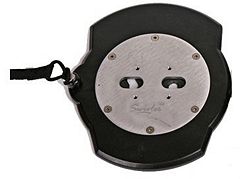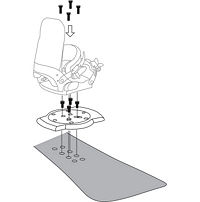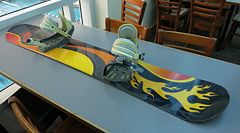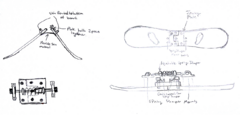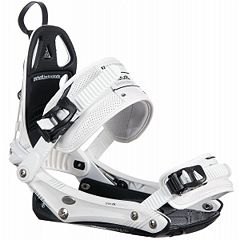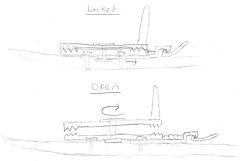Snowboard opportunity
From DDL Wiki
Contents |
Executive Summary
Market Research
Anthropological Observation
From our groups past experience of going several times a year to different ski resorts in the US and Europe, coupled with online video research we made several observations.
When moving from their cars to the ski lift, snowboarders seem to be quite confortable as they only have one piece of equipment and fairly confortable boots, especially when observed next to skiers who have two skis and two poles to carry and have much more unconfortable boots. There are several different ways to carry a snowboard the most common being holding it at their side [1] . Other possibilites are behind their back, or on their shoulders.
However one of the most common problems experienced by snowboarders is struggling getting on and off ski lifts. Snowboarders, especially beginners have great difficulties getting on J-bar(button lift) and T-bar lifts. These lifts originally designed for skiers requires that the snowboarder places the bar or disc agaist the inside of their leg. As the lift is moving at fairly high speeds when placed between the snowboarders leg, it can cause the snowboarder to lose balance and fall. This is an issue which can be both painful and embarrassing for the snowboarder, as not only does he/she fall but can risk getting dragged along on the ground by the lift still between the legs. This problem also affects the other users and ski resort owners as it increases queue time, as several lifts are wasted during the time the snowboarder gets back up and attempts again, often several times. Due to some snowboarders lack of confidence in these lifts they also often waste time by letting several lifts pass them by before attempting to mount the ski lift. Although less common than the T-lifts, J-bar lifts cause even greater problems for snowboarders as the disc surface designed to attach between the legs of skiers has very little surface that can be placed parallel to the snowboarders leg. [2] [3]
Furthermore we looked at snowboarders taking chairlifts. When taking ski lifts (either chairlifts or bar lifts) snowboarders detach their back foot from their binding. Getting on chairlifts does not cause many problems for either skiers or snowboarders. However this is not true for getting off chairlifts. When exiting a chairlift, one moves at the speed of the lift as one slides off. This does not generally cause skiers any problems as their boots remain in skiing position during the chair lift, but for snowboarders it can be difficult to get their balance with only one foot strapped in which often cause them to fall over as they exit the chair lift. One person falling can cause a chain reaction as they block the exit area, making it more difficult for those on the next lift to remain on their feet. [4]
After exiting a ski lift, skiers can begin skiing straight away, often using the speed of the lift to get to the inclined slope, or using their poles to take them there. Snowboarders usually sit down after the ski lifts in order to strap their boots into the binding, thus losing the speed from exiting the ski lift. There is often a flat part between the ski lifts and the inclined part of the slopes and snowboarders either have to push along with their free foot, which is difficult given the approximately 90 degree angle between the board and the binding or acwardly step with one foot lifting the board. [5]
Certain ski resorts have slopes which have an incline followed by a flat part. Many riders, both skiers and snowboarders do not have enough speed from the incline to get past the flat part of the slope. Skiers can use their poles to move forward if stuck on the flat, and can also move their skis to create forward motion. Snowboarders either have to unstrap and slide along as described before or use their board to either wiggle or jump forward, another possibility is leaning down and pushing with their hands, all methods are slow, uncomfortable and requires a lot of energy [6] [7] [8]
User Interviews
We conducted two user interviews, Evan Waldens brother, and Erik Ringvolds mother Trude
Trude is a 56 year old, very active woman who runs, bikes or skis (depending on the season) at least 6 times a week. However, she has arthritis making her fingers very weak. This condition is worsened by the cold, which means strapping on ski boots sufficiently tight on top of a mountain is impossible. Also the weigth of carrying skis from the car to the ski lift can be challenging for her, especially if the car is parked far away. Another point brought up, was that she belives snowboarders have much less control in the slopes than skiers, and she tries to keep away from them as she had an accident 2 years ago, where a snowboarder collided into her causing several months of pain and disability to do sports.
Conclusions: Although snowboard bindings are different than ski boots, they work on the same principle, and people with arthritis would probably struggle with their snowboard bindings, especially if their fingers are cold. The weigth of a snowboard is also a little less than skis but for older users or children it can be difficult to carry the board. However statistics from the National Institute of health shows that its not true that snowboarders have less control than skiers. They are equally prone to accidents altough snowboard accidents tend to be less severe [9]
Expert Interviews
Online Product Reviews
From product reviews at amazon.com we were able to exctract information about possible opportunities to improve todays snowboards. The reviews of the board itself were generally extremely positive. Most people commented positively on the boards dynamics such as flexibility, stable at high speeds, soft landings, good on all terrain and there were comments on boards being lightweight. The only negative comment was about a board getting cracks on the top surface, but after being left in a moist bag for several months. We looked at reviews for snowboard wall racks, where we saw comments on people being satisified to get more space in their room, due to this device [10]. The reviews for bindings was much more negative, the vast majority concerned parts not working correctly or breaking after using them only a few times. Users also complained about children not being able to put on their own bindings, the plastic bindings become stiff and hard to manipulate during winter temperatures, bindings unlocking while riding, bindings filling up with snow while riding [11]. Another comment described how the strap was too long and ended up touching the snow and acting like a break, which is a serious design flaw [12].
We drew the following conclusions from the product reviews :
- The board is very optimized, litte room for improvement
- Some users would benefit from an easily storable snowboard
- There are several problems with the bindings, manufacturing as well as design flaws
Online Forum Survey
We conducted a survey [13] on reddit.com a snowboard forum, asking snowboarders if they would benefit from the idea of a foldable snowboard, considering it had the same dynamic properties as a regular snowboard. The answers consisted mostly of people thinking that it can not be done. One person expressed interest in this kind of snowboard and another said it would not be useful as the snowboard was not the most ackward thing to transport, but rather the boots, helmet and clothing.
Top Stakeholder Product Needs
We identified four major stakeholders in the life cycle of the competitor's product: the user, the retailer, the manufacturer and the shipping company. After the market research we decided to focus on the user product needs. The product is produced for the user, therefore his needs are the ones that should be first taken into consideration when redesigning the competitor's product.
This is the list of user needs from our initial report completed with needs found from market research:
- Low price
- Light with sufficient rigidity and flexibility
- Durable
- Board should have sharp edges but remain safe to carry
- Adjustability and strength of bindings
- Ergonomics of bindings: they should be easy to strap on and release
- Appearance, branding
- Easy to transport
- Easy to store
Top Design Concepts
Foldable Snowboard
Easily Turnable Bindings
Easy Release Bindings
Snowboard/Snowshoe Combo
Competitor Products
We begin by reviewing the different kinds of conventional snowboards that exist on the market. Then, we take a look at three innovations that have appeared recently: the splitboard, the Magne-Traction Snowboard and the Swivler Rotating Binding Attachment.
Common Snowboards
Snowboarding is a sport that has developed into various styles, the most common ones being freeride, freestyle and freecarve. Each snowboarding style requires a specific equipment that suits the technique needed for that particular style. While all common snowboards are constituted of a board and two bindings, there are various kinds of snowboards that have different shapes and flexibility, and different kinds of bindings. [14] [15]
Freestyle
Freestyle snowboarding consists of performing tricks on man-made terrain features such as rails, jumps and boxes. It usually takes place in parks and urban areas. The snowboards used in freestyle are twin-tipped, which means that both ends have an identical shape. They have a short length, are quite flexible and are used with soft boots. The bindings used are either strap-in bindings, where the boot is retained by an ankle strap and a toe strap, or step-in bindings, where a locking mechanism automatically secures the boot when it is inserted into the binding. Freestyle snowboards are the most popular kind of snowboards, also being used by people going down groomed slopes in ski resorts. The snowboard dissected in Report 1 belongs to this category. For it is the most common kind of snowboard, this is the competitor product against which we will oppose our design ideas.
Freeride
Freeride snowboarding consists of riding down any terrain available, but most often groomed runs. Freeriding includes aerial tricks, borrowed from freestyle, and deep carve turns, common in alpine snowboarding. The snowboards used are longer than freestyle boards and have a moderate to stiff flexibility. They have a directional shape, with a wider and longer nose for more flotation on the powder. Like in freestyle, soft boots are used with either strap-in or step-in bindings.
Freecarve
Freecarve or alpine snowboarding takes place on groomed slopes and consists of making clean and smooth turns. In order to achieve the most efficient carved turn, the snowboards used are long, very stiff and narrow. They have a directional shape and a larger sidecut radius to facilitate carved turns at high speed. They are used with hardshell boots and plate bindings. Plate bindings exist either as manual bail bindings, where the boot is retained by a heel bail and a manual toe clip, or step-in bindings, where the boot is secured by a toe bail and an automatic heel locking mechanism. [16]
Splitboard
A splitboard is a snowboard made of two halves secured together by the bindings. When the bindings are removed, the snowboard splits in half lengthwise. By connecting each binding longitudinally on one half, the snowboard is transformed into a pair of cross country skis. The user then covers the bottom surface with a removable skin that enables him to travel into the backcountry and climb to the top. Once the user is ready to descent, he only has to take off the skin and bindings, join back the two halves together and put the bindings back into snowboard configuration. Splitboards are less efficient than snowboards but are very convenient for trek enthusiasts.
Magne-Traction Snowboard
Magne-Traction is a new design for snowboard sidecuts that tries to solve the problem of loss of control during turns on icy surfaces. Rather than the sidecut being only one concave curve, Magne-Traction features many wavy bumps along each side of the sidecut, in an attempt to provide more contact points between the ice and the cutting edge of the board when turning. As a consequence, the edge hold and control during icy conditions should be improved. [17]
Swivler Rotating Binding Attachment
This innovative product tries to solve the problem of moving on a flat surface with one foot attached to the snowboard. What happens usually is that users struggle to advance on flat surfaces (for instance in the ski lift line), because the foot is attached perpendicularly to the board, making skating on the board very awkward. The Swivler Rotating Binding Attachment is a swivel pivot plate that goes between the bindings and the board. By pulling a cord, the plate can easily swivel, allowing the user to rotate its foot to an angle parallel to the board. He can then skate with his front foot straight as if he was on a skateboard. Also, during the ride on a ski lift, this position eliminates the pain caused by the board twisting the knee. [18]
Pugh Chart
Hey. I think the foldable snowboard should be opposed to the commercial snowboard, and the turnable and easy-release bindings should be opposed to the commercial strap-in bindings. So two separate Pugh Charts (see what they have done in the Automatic Card Shuffler report). The list of stakeholder needs would then differ between the two charts (dynamics and edge quality for the board chart, and bindings adjustability for the binding chart). What do you think? Saviz.
I think we should do one pugh chart with all 3 designs, because otherwise the pugh chart doesn't actualy do what it is supposed to do, compare the innovations we've come up with and help us choose which one is the best. But if everyone else wants to do it the other way I'm not gonna stop you. -Evan
I see what you mean. But the thing is we're actually working on two products: the board and the bindings. I think we should do one pugh chart for each. If you see the reports from the others groups, that's also how they do... But it's true that we then cannot directly compare scores. Saviz.
Gantt Chart
Team Roles
Chris Tomaszewski
Evan Walden
Phil Brown
Saviz Mowlavi - Competitor Products lead
Erik Ringvold - Market Research lead
Conclusion
Summary of Findings
Hypothetical User Scenario
Appendix - List of 100 Design Ideas
- Foldable snowboard with adjustable dynamics
- Snowboard with wheels that turns into skateboard
- Built in bottle opener
- Surfboard with bindings and keel
- Remote control snowboard
- Remote controlled exploration board
- Snowboard/vehicle with seat
- Built in breaks
- Binding that releases foot during fall (like skis)
- Eject able snowboard
- Wind snowboard (like wind surfing)
- Adjustable length
- Energy storage (for tricks)
- Tether to ankle
- Jump assist board
- Voice controlled board
- Built in object avoidance (like in cars)
- Goggles with edge detection and colored terrain gradient
- Built in trail map
- Eye tracking
- Low cost board for beginners
- Heated board to melt ice
- Hover board
- Built in jetpack
- Ferromagnetic board to change dynamics
- Mirrors on helmet (see backwards)
- Front light on board showing terrain
- Screen on board showing speed, gradient, time
- Lightweight board
- Electromagnetic board-boot connection
- Removable top layer for changable designs
- Removable storage container on board
- Using energy from board to charge phone
- Using energy from board to heat rider
- Stiff boots with ski-type binding
- Bindings that are easily removed from board
- Unsymmetric snowboard, front different shape that back
- Water lubrication system, for more speed
- Strap on skins for different snow types
- Hook with spring for placing T-bar lift
- Remote controlled binding strap fastener
- Motor powered rotating blades in the snow to move on flat parts
- Unscratchable bottom surface (hard material)
- Screen and dvd player on snowboard for ski lift
- Avalanche sensors on board with SOS radio system
- Built in GPS with map shown on interactive screen built into board
- Emergency braking system with proximity sensor in case an object is detected
- Bindings that can be easily flattened to facilitate storage
- Strap-in bindings that automatically tighten the straps
- Board that only extends between both feet but rides the same as conventional boards
- Board with fixations for water bottle
References
Videos:
T-bar
http://www.youtube.com/watch?v=ve9BglNdx2Y
J-bar (button lift)
http://www.youtube.com/watch?v=AMxUCzJj_K0
Chair lift
http://www.youtube.com/watch?v=XHmjQiEn_DM&feature=related
Snowboarders walking
http://www.youtube.com/watch?v=BFgCKyi-n_Q
http://www.youtube.com/watch?v=JSMRJZKMU3g
http://www.youtube.com/watch?v=OG480_cSF9w
http://www.youtube.com/watch?v=6afvt6DQCJE&feature=related
Other Sources:
Carrying Snowboard
http://www.abc-of-snowboarding.com/learn-snowboarding/carrying-your-snowboard.asp
Most important user reviews:
http://www.amazon.com/Premium-Snowboard-Horizontal-Wall-Rack/product-reviews/B001AOZB6I/ref=dp_top_cm_cr_acr_txt?ie=UTF8&showViewpoints=1
http://www.amazon.com/PARICON-SB1-110T-FREESTYLE-SNOWBOARD-43/product-reviews/B0037XI2PC/ref=sr_cr_hist_all?ie=UTF8&showViewpoints=1
http://www.amazon.com/Forum-Recon-Snowboard-Binding-Black/product-reviews/B004ZHMO3A/ref=sr_cr_hist_all?ie=UTF8&showViewpoints=1
http://www.amazon.com/Snowjam-Snowboard-Bindings-6-9-sizes/product-reviews/B001ICG418/ref=sr_cr_hist_all?ie=UTF8&showViewpoints=1
http://www.amazon.com/Ride-Snowboard-Bindings-Black-Large/product-reviews/B005OYC1L8/ref=sr_cr_hist_all?ie=UTF8&showViewpoints=1
National Institute of Health: snowboard vs. ski accidents
http://www.ncbi.nlm.nih.gov/pubmed/9555837
Snowboard Forum: Foldable Board Question
http://www.reddit.com/r/snowboarding/comments/q26r4/folding_snowboard/
